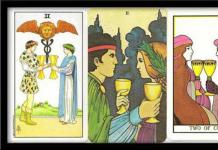Basketball is an extremely popular all around the world. The object is to put a ball through a hoop, or basket, and thus score more points than the opposing team. Teams comprise of ten players, with a maximum of five on court at any one time. Substitutions are unlimited during the course of the game.
Although basketball can be played outdoors, it was invented to serve as an exciting indoor exercise for the winter months in a northern climate. It quickly became a spectator sport, however, and now attracts large audiences to gymnasiums and arenas, especially in the United States, South America, and Europe.
The sport is played on the amateur level by schools, colleges, other groups, and, since 1936 by national teams in the Olympic Games. It also is played by professional athletes, notably in the United States and Europe. The foremost American championships contended for are those of the National Basketball Association (NBA) for professionals, the National Collegiate Athletic Association (NCAA) for colleges. Britain has National Associations for each country and the English Basketball Association (EBBA) runs amateur national competitions, the National Basketball League (NBL) is run by Basketball League Ltd for professionals. International competion is organised by the Federation of International Basketball (FIBA). It all started with two peach baskets in a YMCA in Massachusetts.
In 1891 James Naismith (1861-1939), a leader of the Springfield YMCA, was thinking about ways of providing exercise for the young men in his care. As a physical education instructor he taught gymnastics, however he was looking for something new. He had the idea of nailing peach baskets onto the balconies as goals, at either end of the gymnasium and throwing a soccer ball into it from below. So a National and International game was born.
In 1892 James Naismith published the first booklet containing the basic rules, almost unchanged today (although expanded upon considerably). These rules were adopted by the YMCA and the Amateur Athletic Union. Word spread quickly amongst YMCA"s in the Eastern United States about this new game. It took off so rapidly that the first intercollegiate game was played in 1897, and the first professional league in the following year.
The Eastern Intercollegiate League was formed shortly afterwards, in 1902. Women also took up the game before 1900. The growing popularity of basketball resulted in improvements in equipment and skills. The metal hoop was introduced in 1893, and backboards in 1895. The soccer ball was replaced by the first basketball. As playing skills also became more sophisticated, the game attracted more and more spectators.
Until the late 1930s, scores were low, sometimes in single digits. After each score, opposing centers (one of the five positions, the others being two guards and two forwards) lined up in the middle of the court and jumped for the ball. Then the team that got the ball would pass or dribble until a player was about 3 m (10 ft) from the basket before trying a shot.
The slow pace did not inhibit the growth of the game, however. By the 1920s, basketball was being played all over the United States, and tournaments were being conducted in high school and college gymnasiums. Most states held high school championships for boys.
Several events in the 1930s spurred the growth of the game as a spectator sport and at the same time made basketball more exciting for the players. The first of these came in the 1932-33 season (basketball seasons tend to run from Autumn through to Spring) rules designed to speed up play were adopted. It became mandatory, under penalty of losing possession, to move the ball past midcourt in less than ten seconds. In addition, no player was permitted to remain within the foul lanes for more than three seconds.
Then in 1934 a New York sportswriter, Ned Irish, persuaded the promoters at New York"s Madison Square Garden, a large arena, to schedule doubleheaders between college teams. These events proved successful, and similar promotions followed in other cities. Before long, colleges began building their own arenas for basketball.
Another significant advance occurred in 1936, when a Stanford University team traveled from California to a Madison Square Garden promotion to challenge the eastern powers in the "cradle of basketball". Opponents and fans were stunned by the Stanford style of shooting - one-handed while jumping, which contrasted to the prevalent method of taking two-handed shots while standing still. One Stanford player, Hank Luisetti, was so adept at the "jump shot" that he could outscore an entire opposing team. The new style gained universal acceptance, and basketball scores rose remarkably.
In the 1937-38 season the center jump following each field goal was eliminated. At the end of the next season, Madison Square Garden brought in college teams from around the nation for the National Invitation Tournament (NIT), a postseason playoff that was adopted (1939) on a wider scale by the National Collegiate Athletic Association (NCAA). Although the NIT is still held annually, the NCAA tournament serves as the official intercollegiate championship.
The University of Kentucky (coached, 1930-72, by Adolph Rupp), St. John"s (in New York), the University of North Carolina, Western Kentucky, Kansas University, and Indiana University have been among the leading college basketball teams for years. From 1964 to 1975 the University of California at Los Angeles (UCLA), coached by John Wooden and led by the centers Lew Alcindor and Bill Walton, dominated the intercollegiate play-offs, winning the title an unprecedented 10 times in 12 years.
The 1,250 college teams in the United States now draw about 30 million spectators per season. Although women have played the game since the 1890s, and even though a few states (Iowa, for instance) have shown great participatory and spectator interest in secondary-school women"s basketball for some decades, significant growth and serious recognition of women"s basketball in the United States and elsewhere did not occur until the 1970s.
Almost all U.S. states now hold girls" high school tournaments, and basketball is the fastest-growing women"s intercollegiate sport. From 1898 on, many attempts were made to establish professional basketball as a spectator sport - but success did not come until 1946. The best of the early efforts was made by the Harlem Globetrotters, an all-black team that toured first only the United States and then internationally to play local professional or semi-professional teams. The Globetrotters, founded in 1926, were not affiliated with a league. Their style was and is often showy because, at least into the early 1950s, they could dominate all opponents.
In 1946 serious professional basketball had acquired a following among American sports fans, who wanted to see the former collegians in action. That year the Basketball Association of America, with teams from the United States and one from Toronto, began competing in large arenas in the major cities. Another professional league, the National Basketball League, was already in existence, with many franchises in medium-sized midwestern cities. The two leagues merged in 1949 as the National Basketball Association (NBA) and pared away the weaker franchises.
With the signing of the country"s best collegians through what was called a player draft, the NBA could display both talent and balance. The NBA"s greatest spurt of growth occurred in the 1960s and "70s. Although the Boston Celtics, led by Bill Russel, Bob Cousy, and John Havlicek and coached by Red Auerbach, won 11 of 13 NBA titles beginning in 1957, fans also closely followed such stars as Philadelphia"s Wilt Chamberlain, Cincinnati"s Oscar Robertson, and Los Angeles"s Jerry West and Elgin Baylor.
The NBA of the 1970s and 1980s exhibited a welcome balance of power: from 1970 until 1988 no team won consecutive NBA titles, though the New York Knicks (with Willis Reed, Walt Frazier, and Bill Bradley) won twice; the Boston Celtics, 5 times (3 with Larry Bird); and the Los Angeles Lakers, 6 times (5 with Magic Johnson). In the 1970s the NBA expanded from 9 teams to 22. Some of the new franchises were acquired when the American Basketball Association (1968-76) merged with the NBA. Also, a Dallas franchise was added in 1980; Charlotte, Carolina, and Miami, in 1988; and Minnesota and Orlando, in 1989.
During the late 1970s and early 1980s several women"s professional leagues were begun; all of them failed financially. Women in the USA are currently under the WNBA. The NBA today enjoys a massive worldwide following, and European basketball is fast emerging to challenge the domination of the Americans.
History of Basketball
Introduction
Basketball is an extremely popular all around the world. The object is to put a ball through a hoop, or basket, and thus score more points than the opposing team. Teams comprise of ten players, with a maximum of five on court at any one time. Substitutions are unlimited during the course of the game. Although basketball can be played outdoors, it was invented to serve as an exciting indoor exercise for the winter months in a northern climate. It quickly became a spectator sport, however, and now attracts large audiences to gymnasiums and arenas, especially in the United States, South America, and Europe.
The sport is played on the amateur level by schools, colleges, other groups, and, since 1936 by national teams in the Olympic Games. It also is played by professional athletes, notably in the United States and Europe.
The foremost American championships contended for are those of the National Basketball Association (NBA) for professionals, the National Collegiate Athletic Association (NCAA) for colleges. Britain has National Associations for each country and the English Basketball Association (EBBA) runs amateur national competitions, the National Basketball League (NBL) is run by Basketball League Ltd for professionals. International competion is organised by the Federation of International Basketball (FIBA).
The Early Days.
It all started with two peach baskets in a YMCA in Massachusetts.
In 1891 James A Naismith (1861-1939), a leader of the Springfield YMCA, was thinking about ways of providing exercise for the young men in his care. As a physical education instructor he taught gymnastics, however he was looking for something new. He had the idea of nailing peach baskets onto the balconies as goals, at either end of the gymnasium and throwing a soccer ball into it from below.
So a National and International game was born.
In 1892 he published the first booklet containing the basic rules, almost unchanged today (although expanded upon considerably!). These rules were adopted by the YMCA and the Amateur Athletic Union.
Word spread quickly amongst YMCA"s in the Eastern United States about this new game. It took off so rapidly that the first intercollegiate game was played in 1897, and the first professional league in the following year. The Eastern Intercollegiate League was formed shortly afterwards, in 1902. Women also took up the game before 1900.
The growing popularity of basketball resulted in improvements in equipment and skills. The metal hoop was introduced in 1893, and backboards in 1895. The soccer ball was replaced by the first basketball. As playing skills also became more sophisticated, the game attracted more and more spectators.
Until the late 1930s, scores were low, sometimes in single digits. After each score, opposing centers (one of the five positions, the others being two guards and two forwards) lined up in the middle of the court and jumped for the ball. Then the team that got the ball would pass or dribble until a player was about 3 m (10 ft) from the basket before trying a shot. The slow pace did not inhibit the growth of the game, however. By the 1920s, basketball was being played all over the United States, and tournaments were being conducted in high school and college gymnasiums. Most states held high school championships for boys.
The Rise of the Modern Game
Several events in the 1930s spurred the growth of the game as a spectator sport and at the same time made basketball more exciting for the players. The first of these came in the 1932-33 season (basketball seasons tend to run from Autumn through to Spring) rules designed to speed up play were adopted. It became mandatory, under penalty of losing possession, to move the ball past midcourt in less than ten seconds. In addition, no player was permitted to remain within the foul lanes for more than three seconds. Then in 1934 a New York sportswriter, Ned Irish, persuaded the promoters at New York"s Madison Square Garden, a large arena, to schedule doubleheaders between college teams. These events proved successful, and similar promotions followed in other cities. Before long, colleges began building their own arenas for basketball.
Another significant advance occurred in 1936, when a Stanford University team traveled from California to a Madison Square Garden promotion to challenge the eastern powers in the "cradle of basketball." Opponents and fans were stunned by the Stanford style of shooting--one-handed while jumping, which contrasted to the prevalent method of taking two-handed shots while standing still. One Stanford player, Hank Luisetti, was so adept at the "jump shot" that he could outscore an entire opposing team. The new style gained universal acceptance, and basketball scores rose remarkably.
In the 1937-38 season the center jump following each field goal was eliminated. At the end of the next season, Madison Square Garden brought in college teams from around the nation for the National Invitation Tournament (NIT), a postseason playoff that was adopted (1939) on a wider scale by the National Collegiate Athletic Association (NCAA). Although the NIT is still held annually, the NCAA tournament serves as the official intercollegiate championship.
The University of Kentucky (coached, 1930-72, by Adolph Rupp), St. John"s (in New York), the University of North Carolina, Western Kentucky, Kansas University, and Indiana University have been among the leading college basketball teams for years. From 1964 to 1975 the University of California at Los Angeles (UCLA), coached by John Wooden and led by the centers Lew Alcindor and Bill Walton, dominated the intercollegiate play-offs, winning the title an unprecedented 10 times in 12 years. The 1,250 college teams in the United States now draw about 30 million spectators per season.
Although women have played the game since the 1890s, and even though a few states (Iowa, for instance) have shown great participatory and spectator interest in secondary-school women"s basketball for some decades, significant growth and serious recognition of women"s basketball in the United States and elsewhere did not occur until the 1970s. Almost all U.S. states now hold girls" high school tournaments, and basketball is the fastest-growing women"s intercollegiate sport.
Professional Basketball
From 1898 on, many attempts were made to establish professional basketball as a spectator sport-but success did not come until 1946. The best of the early efforts was made by the Harlem Globetrotters, an all-black team that toured first only the United States and then internationally to play local professional or semi-professional teams. The Globetrotters, founded in 1926, were not affiliated with a league. Their style was and is often showy because, at least into the early 1950s, they could dominate all opponents.
In 1946 serious professional basketball had acquired a following among American sports fans, who wanted to see the former collegians in action. That year the Basketball Association of America, with teams from the United States and one from Toronto, began competing in large arenas in the major cities. Another professional league, the National Basketball League, was already in existence, with many franchises in medium-sized midwestern cities. The two leagues merged in 1949 as the National Basketball Association (NBA) and pared away the weaker franchises.
Modern Times
With the signing of the country"s best collegians through what was called a player draft, the NBA could display both talent and balance. The NBA"s greatest spurt of growth occurred in the 1960s and "70s. Although the Boston Celtics, led by Bill Russel, Bob Cousy, and John Havlicek and coached by Red Auerbach, won 11 of 13 NBA titles beginning in 1957, fans also closely followed such stars as Philadelphia"s Wilt Chamberlain, Cincinnati"s Oscar Robertson, and Los Angeles"s Jerry West and Elgin Baylor. The NBA of the 1970s and 1980s exhibited a welcome balance of power: from 1970 until 1988 no team won consecutive NBA titles, though the New York Knicks (with Willis Reed, Walt Frazier, and Bill Bradley) won twice; the Boston Celtics, 5 times (3 with Larry Bird); and the Los Angeles Lakers, 6 times (5 with Magic Johnson).
In the 1970s the NBA expanded from 9 teams to 22. Some of the new franchises were acquired when the American Basketball Association (1968-76) merged with the NBA. Also, a Dallas franchise was added in 1980; Charlotte, Carolina, and Miami, in 1988; and Minnesota and Orlando, in 1989.
During the late 1970s and early 1980s several women"s professional leagues were begun; all of them failed financially. Women in the USA are currently under the WNBA.
The NBA today enjoys a massive worldwide following, and European basketball is fast emerging. to challenge the domination of the Americans. Watch this space...!
ГАПОУ СПО Тольяттинский социально-педагогический колледж
Разработка учебного занятия по английскому языку с использованием технологии РКМЧП на тему: «The history of basketball (История баскетбола)»
Преподаватель: Корякова Елена Валерьевна
2013
Технологическая карта урока
Преподаватель: Корякова Елена Валерьевна
Предмет: Иностранный язык (английский)
Специальность: «Физическая культура»
Группа : ФК -31
Тема урока : The history of basketball ( История баскетбола )
Тип урока: комбинированный урок
Длительность: 45 минут
Дидактические задачи (цель учебного занятия): 1.совершенствование лексических навыков студентов;
2. развитие устной и письменной англоязычной речи.
Развивающие задачи: развитие критического мышления, посредством чтения информационного текста.
Воспитательные задачи: 1. формирование устойчивой мотивации к изучению английского языка;
2. закрепление интереса к получаемой профессии ;
3.формирование уважительного отношения к мнению другого человека, потребности в высказывании своего собственного мнения .
Оборудование: доска, карточки с ключевыми словами, бланки с таблицей ЗХУ, схема синквейна.
Ход учебного занятия
Этапы учебного занятия
Содержание учебного материала
Методы обучения
Средства обучения
Ориентировочная дозировка времени
Организационный
Преподаватель и учащиеся приветствуют друга. Преподаватель озвучивает тему и цель занятия.
-
-
2-3 мин
1 стадия: Вызов
Перед началом работы учащимся раздаются карточки с ключевыми словами, на основе которых, им в парах предлагается сочинить рассказ на английском языке по теме «История баскетбола».
После чего каждая из пар озвучивает свой рассказ. Преподаватель принимает любые версии, ничего не отрицая.
Учащимся раздаются бланки с таблицей ЗХУ, в которой они заполняют колонку «Знаю» на основе составленных ими рассказов. Учащиеся делятся друг с другом информацией, систематизируя и заполняя графу «Категории информации».
Сделанные записи обсуждаются.
Знаю
Хочу узнать
Узнал
Источники информации
Составление рассказа по ключевым словам
Парная мозговая атака
Работа всей группы Таблица ЗХУ
Карточки со словами:
United States
Canadian clergyman
30 inches in diameter
Soccer
In 1921
10 мин
2 стадия: Осмысление
Учащимся предлагается текст «The history of basketball », который они должны внимательно прочитать, делая пометки.
Метод пометок INSERT
Бланки с таблицей
15 мин
3 стадия: Рефлексия
По окончании чтения учащимся предлагается вернуться к сделанным пометкам и заполнить на их основе 3 колонку таблицы ЗХУ «Узнал».
Скорректировать сведения в графе узнал. Сделать выводы, что же ещё хочется узнать и записать в таблицу в форме вопросов. Учащиеся определяют круг возможных способов получения необходимой информации, заполняя графу «Источники информации»
Учащимся предлагается составить синквейн на английском языке с ключевым словом «Баскетбол»
Таблица ЗХУ
Фронтальная работа в режиме полилога
Парная работа
Схема составления синквейна
12-13 мин
Подведение итогов выставление оценок
Учащиеся зачитывают синквейн. Преподаватель выставляет оценки, благодарит учащихся за работу.
-
-
5 мин
Приложение 1
Таблица ЗХУ
Знаю
Хочу узнать
Узнал
Источники информации
Приложение 2.
The Нistory of Вasketball.
The game of basketball has evolved a great deal throughout the years. Basketball was invented (былизобретён) on December 21, 1891. The inventor of the game was a Canadian clergyman (священнослужитель) , James Naismith.
The game of basketball was fashioned from fragments of other games, seeking to eliminate flaws (сцельюустранениянедостатков) of rugby, soccer.
Basketball was first played in the United States at one training school, now called Springfield College.
Basketball is a simple game. The equipment (снаряжение) used in the game is also very simple. In addition to the field itself, all that is needed for a game is a ball. The first basketball ball was slightly smaller, about 30 inches in diameter. The first baskets that were used, were two peach baskets hung from the balcony of the gymnasium (гимнастическийзал) .
In 1893 , the backboard (баскетбольныйщит) was invented. The first backboard was constructed out of wire mesh (проволочнаясетка) , then wood and now it is made out of glass so the backboard does not interfere with the viewing of the game. Around that time, there was no name for this game. By 1906, the peach baskets were replaced by metal baskets with holes in the bottom. This was better than in the early days, when a ladder was used to climb and fetch the ball out of the basket (вынутьмячизкорзины) . Finally, in 1913 a hoop with a net (обручссеткой) was invented. In my opinion, the invention of the hoop and net was a major step in the developing of the game of basketball .
In 1921, one man named the game «basketball» and it has been called basketball ever since.
In the very beginning Naismith introduced thirteen original rules for the game of basketball, in which 12 out of the 13 original rules were still used up to 1934. The only rule, which changed, was that a player was now allowed to dribble a basketball (вестибаскетбольныймяч) . The rule of dribbling the basketball was first used in 1896 at a basketball game at Yale University (Йельскийуниверситет) . Also Naismith created four fundamental principles, which stayed in the game from 1891to 1937. These four fundamental principals stated, players with the ball must not make progress, the goal is above the head of the players, roughness (грубость) is eliminated and a player may not receive the ball by use of contact (силовойконтакт) .
Through the years of 1891 to the 1940"s there were many rule changes as well as addition of rules to the game of basketball. By 1898, basketball leagues were starting to form in the United States. In 1898, professional basketball was being played. The league was called the National Basketball League (NBL). The National Basketball League was made up of four teams like New York, Philadelphia, Brooklyn and New Jersey.
By 1932 basketball was officially gaining international status with the founding of the International Amateur Basketball Federation in Geneva, Switzerland. In 1946, the Basketball Association of America was formed but it did not go far well because it was competing against the National Basketball League. But in 1949, the Basketball Association of America and the National Basketball League joined together.
They changed their name to the National Basketball Association (NBA). Throughout the formation of the league there were many rules that were added to the game of basketball In 1930"s, Kenny Sailor invented the jump shot (бросоквпрыжке) . Also in the 1940"s, Bob Kurland used block- shots. In 1952 the foul lane (штрафнаязона) was widened and the three-second rule was put into affect (введено) , so centres could not station themselves in front of the basket all the time. During the 1950"s the National Basketball Association was on the rise.
At this time, basketball was increasing in popularity. Nowadays it is played by 176 nations.
Приложение 3
Схема составления синквейна
Мой любимый спорт - баскетбол. Это очень популярный вид спорта. Мне нравится и другие виды спорта, но баскетбол больше всего. Я не плохо играю в него.Первый раз я взяла в руки баскетбольный мячик в школе, но меня тогда не сильно привлек этот спорт потому что у меня не получались многие приемы этой игры.
Баскетбол это командная игра. Чаще всего мы играем в него на физкультупе. Баскетбол развивает реакцию, скорость, координацию, умение играть в команде. Чтобы выйграть,нужно как можно больше попасть мячом в корзину. Кажется,что это легко, но на самом деле это совсем не так.Играть в него не легко и Иногда наша команда проигрывает.В эту игру играют в любое время года, потому что играют в эту игру в закрытом помещении. В нее играют в спортивном зале. В игре две команды всего с пятью игроками. Но как и любой вид спорта басетбол может быть опасным,можно получить множество травм,поэтому,к нему нужно относиться с осторожностью
Мой любимый спорт - баскетбол. Это очень популярный вид спорта. Мне нравится и другие виды спорта, но баскетбол больше всего. Я не плохо играю в него.Первый раз я взяла в руки баскетбольный мячик в школе, но меня тогда не сильно привлек этот спорт потому что у меня не получались многие приемы этой игры. Баскетбол это командная игра. Чаще всего мы играем в него на физкультупе. Баскетбол развивает реакцию, скорость, координацию, умение играть в команде. Чтобы выйграть,нужно как можно больше попасть мячом в корзину. Кажется,что это легко, но на самом деле это совсем не так.Играть в него не легко и Иногда наша команда проигрывает.В эту игру играют в любое время года, потому что играют в эту игру в закрытом помещении. В нее играют в спортивном зале. В игре две команды всего с пятью игроками. Но как и любой вид спорта басетбол может быть опасным,можно получить множество травм,поэтому,к нему нужно относиться с осторожностью
Определить язык Клингонский Клингонский (pIqaD) азербайджанский албанский английский арабский армянский африкаанс баскский белорусский бенгальский болгарский боснийский валлийский венгерский вьетнамский галисийский греческий грузинский гуджарати датский зулу иврит игбо идиш индонезийский ирландский исландский испанский итальянский йоруба казахский каннада каталанский китайский китайский традиционный корейский креольский (Гаити) кхмерский лаосский латынь латышский литовский македонский малагасийский малайский малайялам мальтийский маори маратхи монгольский немецкий непали нидерландский норвежский панджаби персидский польский португальский румынский русский себуанский сербский сесото словацкий словенский суахили суданский тагальский тайский тамильский телугу турецкий узбекский украинский урду финский французский хауса хинди хмонг хорватский чева чешский шведский эсперанто эстонский яванский японский Клингонский Клингонский (pIqaD) азербайджанский албанский английский арабский армянский африкаанс баскский белорусский бенгальский болгарский боснийский валлийский венгерский вьетнамский галисийский греческий грузинский гуджарати датский зулу иврит игбо идиш индонезийский ирландский исландский испанский итальянский йоруба казахский каннада каталанский китайский китайский традиционный корейский креольский (Гаити) кхмерский лаосский латынь латышский литовский македонский малагасийский малайский малайялам мальтийский маори маратхи монгольский немецкий непали нидерландский норвежский панджаби персидский польский португальский румынский русский себуанский сербский сесото словацкий словенский суахили суданский тагальский тайский тамильский телугу турецкий узбекский украинский урду финский французский хауса хинди хмонг хорватский чева чешский шведский эсперанто эстонский яванский японский Источник: Цель:
Результаты (английский ) 1:
My favorite sport is basketball. This is a very popular sport. I like other sports but basketball more than anything. I didn"t play bad. The first time I took into the hands of a basketball ball in high school, but I did not strongly attracted by this sport because I have not received many tricks of this game.Баскетбол это командная игра. Чаще всего мы играем в него на физкультупе. Баскетбол развивает реакцию, скорость, координацию, умение играть в команде. Чтобы выйграть,нужно как можно больше попасть мячом в корзину. Кажется,что это легко, но на самом деле это совсем не так.Играть в него не легко и Иногда наша команда проигрывает.В эту игру играют в любое время года, потому что играют в эту игру в закрытом помещении. В нее играют в спортивном зале. В игре две команды всего с пятью игроками. Но как и любой вид спорта басетбол может быть опасным,можно получить множество травм,поэтому,к нему нужно относиться с осторожностью
переводится, пожалуйста, подождите..
Результаты (английский ) 2:
My favorite sport - basketball. This is a very popular sport. Like other sports, but basketball the most. I"m not a bad game it .First time I picked up the ball in the basketball school, but then I was not very attracted to this sport because I did not get a lot of tricks of the game.
Basketball is a team game. Most often, we play his fizkultupe. Basketball develops reaction speed, coordination, ability to play as a team. To win, you need as much as possible to get the ball in the basket. It seems that it"s easy, but in reality it is not so .Igrat it is not easy and sometimes our team proigryvaet.V this game play at any time of year, because playing the game indoors. It is played in a sports hall. The game has just two teams with five players. But like any sport basetbol can be dangerous, you can get a lot of injuries, so it should be taken with caution
Basketball is among the world’s most popularized sports nowadays. It’s played by both men and women. If speaking about the professional game, it involves two teams comprising of five players on a ground. Those who simply arrange street basketball with friends can have as many people in their team as they want. It’s a great way of exercising and fun pastime.
The history of this game is rather interesting. It all started in 1891 in Springfield, USA. One of the most influential coaches, Dr. James Naismith , was invited to train the students and to think of a catchy new game. The game he offered quickly became popular in the 20th century as it involved team spirit development. Today it’s an integral part of sports culture and has millions of fans across the world.
At first there were thirteen common rules made up by Naismith. The rules were quite strict, so it wasn’t easy to play the game. For example, the players were not allowed to run across the playground with a ball or to hold it with both hands. They had to throw it solely from the point they caught it. No shouldering or pushing was allowed. Any of these acts could be taken as a foul. The very first game was played with two peach baskets, which sounds funny today. They also used a soccer ball instead of a spherical inflated ball.
Many things have changed since then, but the main idea of the game hasn’t. The team should score as many goals as they can to win the game. In case both teams end in a draw, additional time is added to break it. There are many other rules that apply to this game nowadays. For example, one of the accepted forms of ball advancing is dribbling. There is a whole set of rules concerning this action. It is against the rules to simply carry the ball across the playground or to double-dribble. Another important rule is that the ball cannot be kicked like in football.
Regular game of basketball can last up to two hours. It consists of four 10-12 minute quarters. Additional five minutes can be added if it’s a tie (draw). One of the most important items in this game is a thematic uniform. The players usually wear a jersey and a pair of shorts. Each of them has a unique identification number along with a name and a team symbol on the jersey. Today there can also be some marks from game sponsors on players’ outfit.
In conclusion, I would like to mention that basketball is a very spectacular team sport. It is included in Olympics since 1936 . The inventor of the game James Naismith personally awarded the first medalists. Today there are many variations of basketball, such as streetball, water basketball, wheelchair basketball, netball, etc. In fact, wheelchair basketball is a full medal sport in the Summer Paralympics.


























